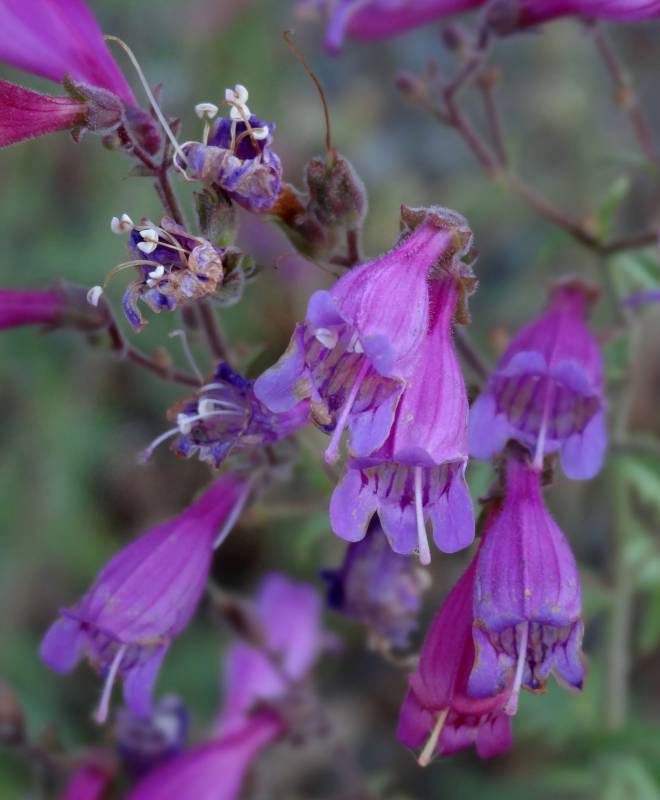Penstemon cardwellii
Penstemon richardsonii
Cardwell's beardtongue
Richardson's penstemon
Leaves opposite, glabrous, the largest on short, sterile shoots, serrulate or nearly entire, short-petiolate, the blades elliptic, 1.5-3.5 cm. long and 6-14 mm. wide;
leaves of the flowering shoots less crowded, smaller, sessile and entire.
Leaves opposite, all cauline, the lower reduced and short-petiolate, the others sessile, sharply serrate-dentate to irregularly pinnatifid, up to 7 cm. long and 3 cm. wide.
Inflorescence racemose, few-flowered and crowded, glandular, the simple pedicels opposite and axillary;
calyx 5-12 mm. long, the 5 segments thin and lanceolate;
corolla bright purple to deep blue-violet, 30-38 mm. long, about 1 cm. wide at the mouth, keeled on the back, glabrous outside and with long, white hairs near the base of the lower lip within;
anthers long-wooly, pollen sacs opposite;
staminode slender, shorter than the 4 fertile filaments, long-bearded toward the tip
Inflorescence a terminal panicle, leafy-bracteate below;
calyx 4-8 mm. long, the 5 segments green or purplish, mostly entire, often unequal;
corolla bright lavender to purplish-red, glandular-hairy outside, mostly glabrous within, 22-32 mm. long, over 1 cm. wide at the mouth, strongly bilabiate, the upper lip cleft nearly half its length;
anthers 1.3-1.7 mm. long, permanently horseshoe shaped, the pollen sacs saccate and indehiscent below;
staminode shortly exerted, long-bearded toward the tip, or glabrous.
Capsule
Capsule 5-8 mm. long



